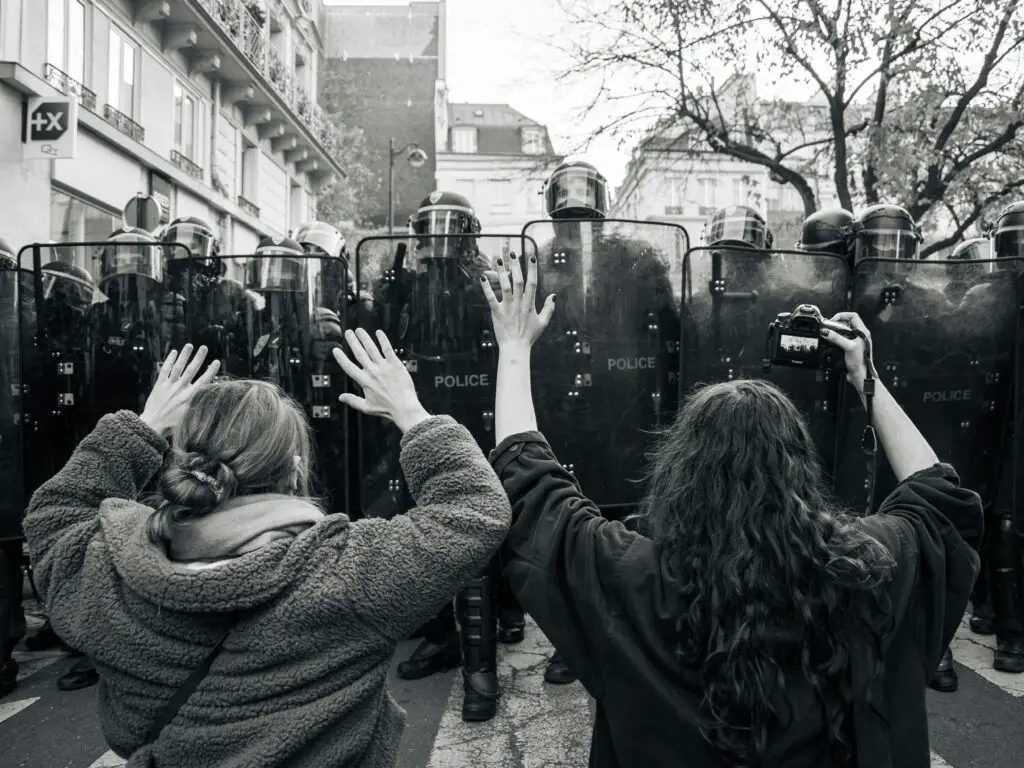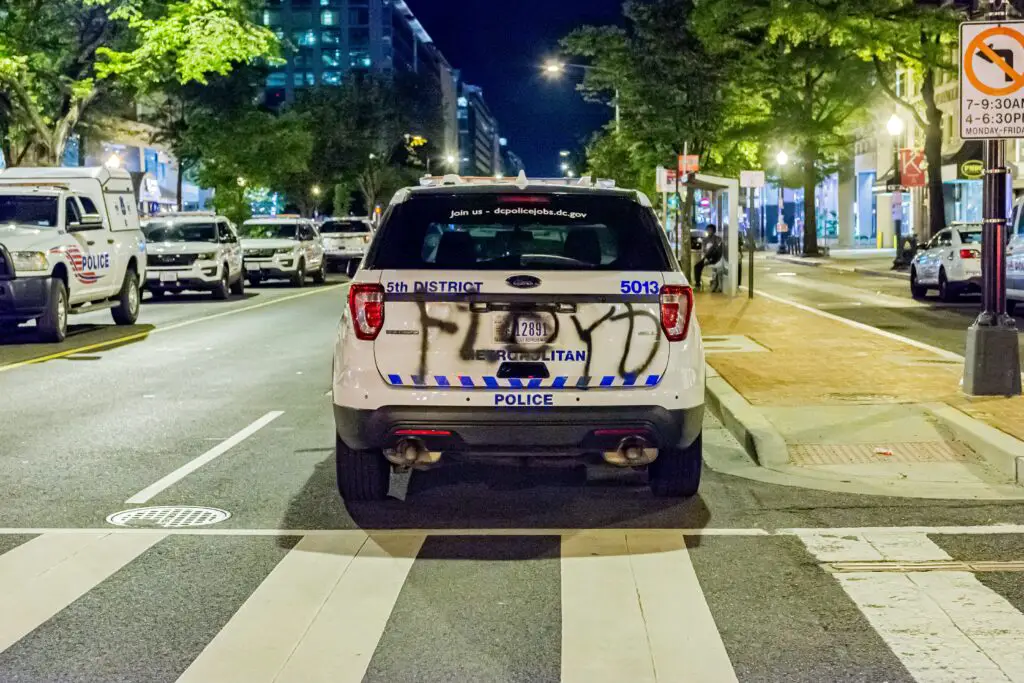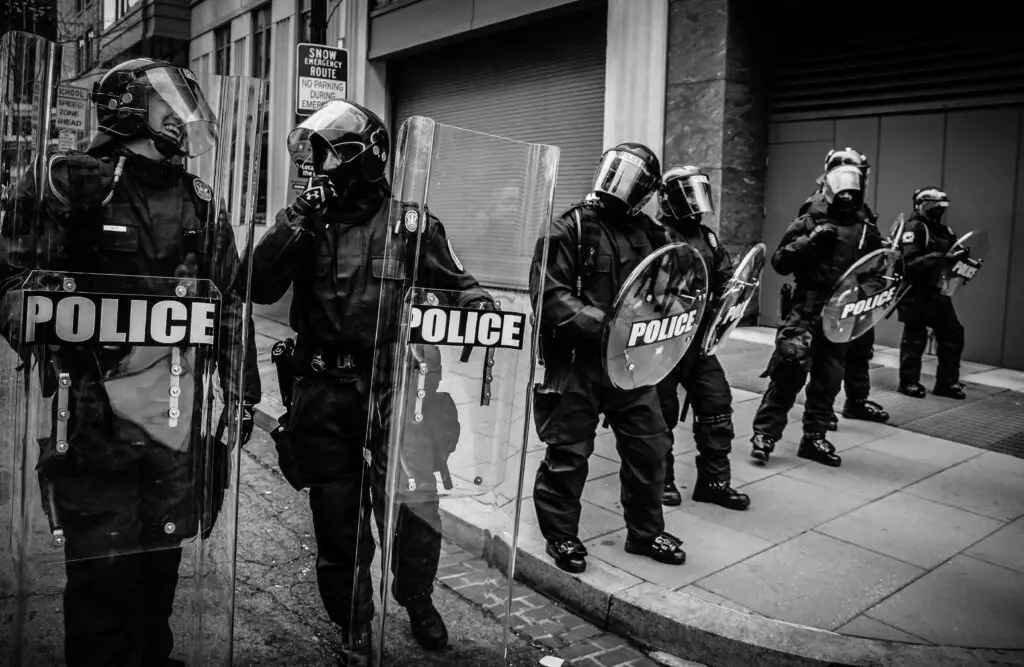Police officers tasked with protecting the public from violent crimes frequently encounter dangerous or even deadly situations. Many of these situations end with a peaceful arrest or minimal damage. However, tensions escalate in some cases, and weapons may be involved. Police use of force plays a crucial role in diffusing these situations and keeping civilians safe. However, using force can lead to lasting damage or even death despite its effectiveness. Ensuring that officers use force only when necessary is vital for the proper functioning of police departments.
Police Use of Force in Viral Bodycam Footage
In news media, it is increasingly common to see videos and hear stories of police improperly using force. One recent clip circulating the internet shows a police officer lethally shooting an older woman in her own home.
The footage is from the body cam of a police officer. He and his partner appear to be making a house visit for an older woman. The officer supposedly requests that the woman turn off her stove, which is boiling water. The woman walks over to the pot of water but does not pour it out or turn the stove off.
The officer begins yelling at the woman to do as he asks, but she fails to comply. The officers raise their guns and aim toward the woman. In fear, the woman huddles behind her counter, still holding the boiling water. Both officers at the scene move closer to the counter, still holding their guns drawn. After a few seconds, the woman flinches or makes some fast movement, ultimately leading the police to shoot her.
Is The Use of Force Justified?

The digital response to this video has been swift and decisive. Almost all commenters agree that the officers were overreacting and did not take any steps to de-escalate the situation properly.
The officer involved in the shooting argued that he was in fear of physical harm before he shot his firearm. Although this generally is what a solid police use of force defense would look like, other facts in the case disagree.
Firstly, the officers both stepped towards the woman holding the boiling water. Arguably, other reasonable officers may have stood back with their firearms to investigate the situation further, making their behaviors questionable at best. Likewise, while boiling water can cause serious injury, it is not lethal, meaning the police used firearms in a way that was not equal or proportional to the threat they perceived.
As a result, the police officer completely unjustified his use of force. Following the incident, authorities arrested him and charged him with murder.
Use of Force and Self-Defense
Self-defense is the use of force by a person or party to protect themselves, their property, or others from a perceived threat. People often use it as a legal defense in cases like assault. To claim self-defense, a person only needs to reasonably perceive a threat rather than having the threat actually occur.
Self-defense law can be somewhat vague at times due to this distinction. For instance, a perceived threat to one person may not threaten another. Legally speaking, the term “reasonable threat” helps determine when a threat is considered real. Individuals must follow other rules when initiating self-defense to ensure it is just. For example, some states have “duty to retreat” laws, which require someone to retreat from a situation before using force is possible. Another important idea regarding self-defense is that it must be proportional, meaning the force used to defend yourself is proportional to your perceived threat.
As a part of their position, police can use self-defense and other uses of force. Some examples of reasonable police use of force include:
- An officer is acting within their position to detain persons who are reasonably dangerous to themselves or others.
- An officer protecting themselves or others from a perceived threat.
- Whenever legally removing someone from a location in which they are illegally trespassing.
As mentioned, all use of force should be proportional. Therefore, even if an officer faces a threat, they must not use deadly force unless it is absolutely necessary.
Reforms in Police Control

Due to the recent spike in police use of force within the media, there have been numerous efforts made to reform police protocol. Firstly, most departments are subject to rigorous and regular training and workshops regarding the proper use of force in the field.
Likewise, many governmental or police organizations have been working to research police use of force to understand any biases or issues that may be present. With this in mind, these organizations have also proposed new protocols to reduce improper use of force.
Lastly, departments have also been switching to promote de-escalation and other forms of conflict management during high-stress situations.
Moving forward, with increased media publicity and accountability put on police departments, there are sure to be positive changes made that promote the health and safety of both officers and the general public.

